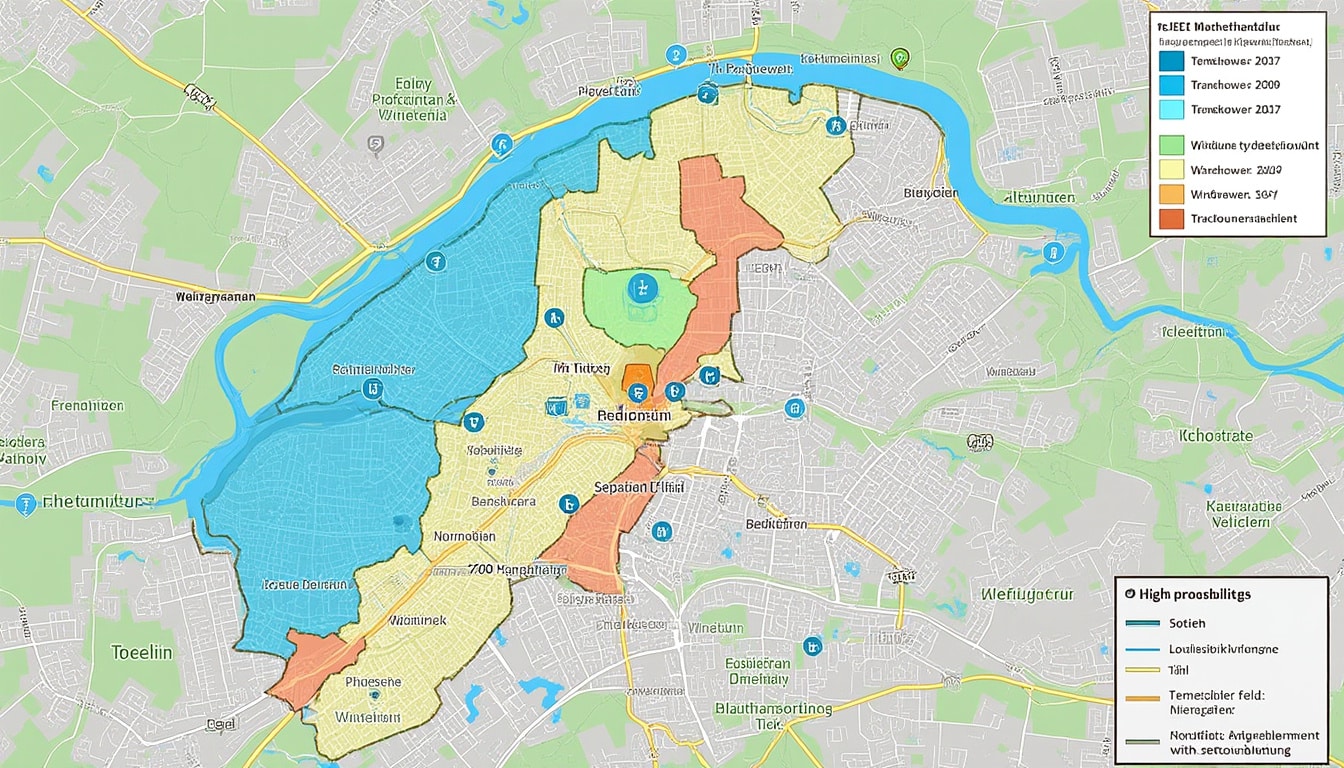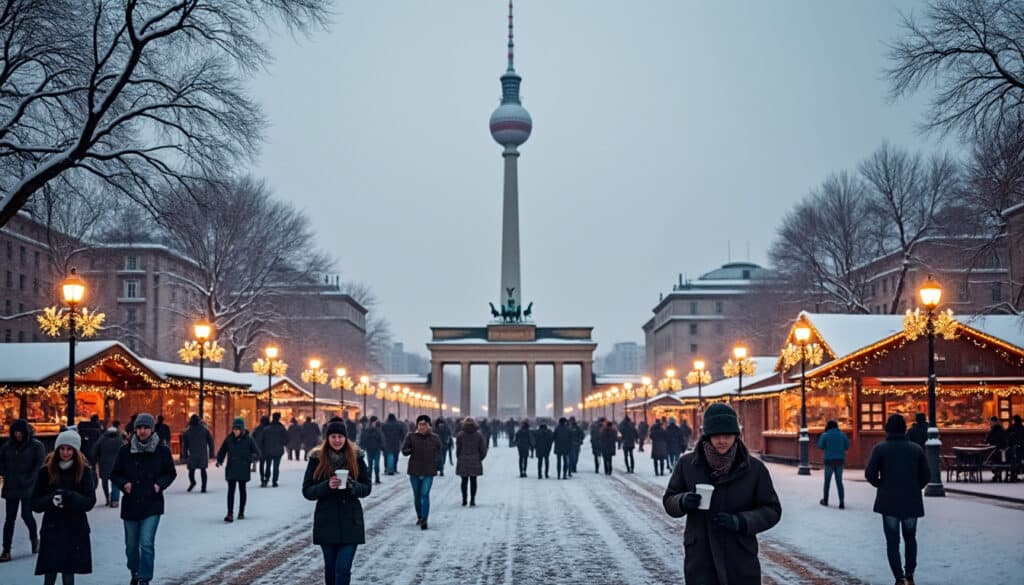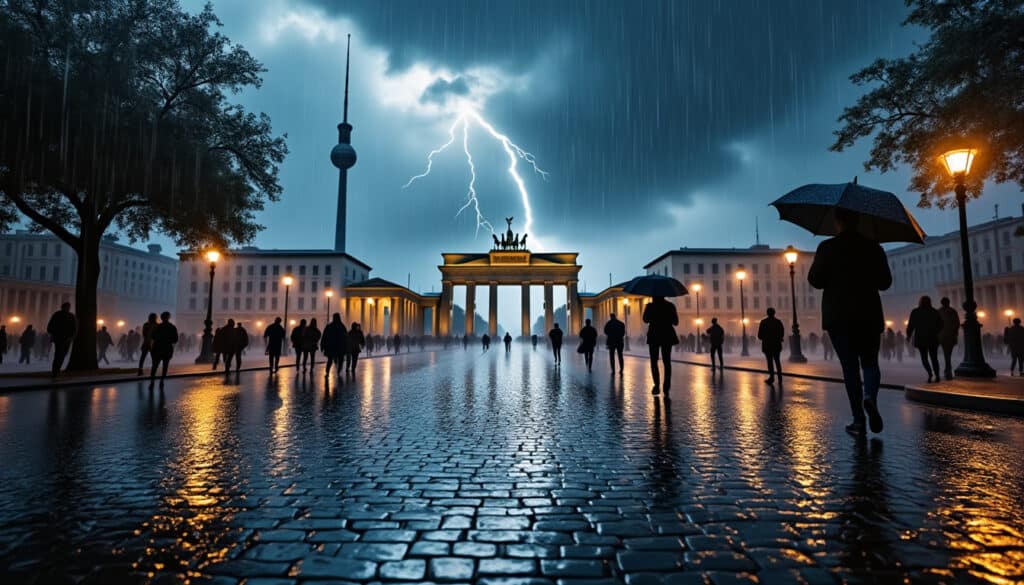The vibrant city of Berlin, known for its rich history and dynamic urban culture, faces its share of natural challenges, particularly flooding. With its intricate network of rivers and canals, Berlin’s flood risks have increasingly become a focal point for city planners and residents alike. Flood hazard maps and risk assessment tools play a crucial role in understanding the city’s vulnerabilities and preparing for potential disasters. Historical patterns, combined with the impact of climate change, necessitate advanced strategies and technologies dedicated to Berlin Flood Control. This article delves into the specifics of Berlin’s flood management systems and the significance of maintaining a ready stance against natural vicissitudes.
Understanding Berlin’s Flood Risk Scenarios
In recent years, the development of flood hazard maps has become an essential tool in Berlin’s fight against flooding. These maps delineate areas susceptible to flooding, allowing for a clear understanding of potential risk zones. For instance, areas along the Tegeler Fließ, Panke, Erpe, Wuhle, Untere Havel/Untere Spree, and Müggelspree are highlighted as high-risk zones. The designation of these areas not only guides urban development but also informs residents and businesses about the probability of flooding.
Understanding these flood scenarios involves assessing various probabilities based on historical data and predictive models. The scenarios are categorized as follows:
- 🌊 Low Probability: Areas with flooding expected once every 200 years.
- ⚠️ Medium Probability: Zones where flooding may occur once every 100 years.
- 🚨 High Probability: Locations subject to more frequent flooding occurrences.
These classifications enable local authorities to prioritize resources effectively and adopt precautionary measures through initiatives like FloodSafe Berlin and EcoFlood Berlin. However, these maps primarily focus on flooding from natural watercourses and do not consider structural failures or groundwater issues. As such, Berlin’s Disaster Management must incorporate a multifaceted approach to ensure the city’s climate resilience.

The Role of Technology in Flood Management
With advancements in FloodProtect Solutions, Berlin has embraced sophisticated technologies to enhance urban flood safety. Modern sensors and predictive analytics are employed to monitor water levels, providing real-time data that forms the basis of early warning systems. These technologies are pivotal in the city’s RiskMitigation Berlin strategy, aiming to minimize the impact of sudden deluges.
Moreover, Berlin’s flood management incorporates sustainable practices by encouraging the construction of green rooftops and permeable surfaces. These infrastructures not only absorb rainwater but also contribute to reducing urban heat and improving air quality—a seamless blend of ecological considerations and urban planning.
Infrastructure Challenges and Aging Systems
Berlin’s aging infrastructure is a significant aspect of its flood risk. The occurrence of burst water mains, like the one on April 30, 2025, in the Friedrichshain district, underscores the city’s vulnerability. Such incidents disrupt water supply and highlight the critical condition of the city’s water network. The 101-year-old pipeline that failed is just one example of the challenges posed by outdated infrastructure.
On average, there are about 500 pipeline bursts per year, a number projected to rise as more pipes reach critical age. These disruptions are symptomatic of broader infrastructure decay across the city. According to recent studies, approximately €108 billion is required over the next decade to modernize Berlin’s public infrastructure, including streets, bridges, and utility networks. The decay of these systems could exacerbate the effects of natural disasters, making urgent maintenance and upgrades imperative.
- 🚰 Water Mains: Over 19,000 kilometers of pipelines need attention.
- 🏗️ Bridges: More than 10% of Berlin’s bridges are due for major repairs.
- 🏫 Public Buildings: Schools and public buildings face longstanding deterioration.
This reality underscores the need for robust disaster preparedness, leveraging new technologies and strategic investments. By integrating FloodGuard Technologies in pipeline monitoring and incorporating public-private partnerships, Berlin aims to improve the resilience of its infrastructural framework.
The Influence of Policy on Flood Mitigation
Policy decisions play a crucial role in shaping Berlin’s response to natural risks. Historical austerity measures have left the city’s infrastructure in a precarious state, as budget reductions have consistently prioritized short-term cost savings over long-term investments in crucial infrastructure.
Recent policy shifts have been focusing on reversing these trends. Investment in resilient infrastructure, guided by Berlin Climate Resilience initiatives, is becoming a priority. The integration of sustainable urban projects, coupled with an emphasis on public awareness and preparedness, is expected to fortify Berlin against floods and other natural threats.
Sustainability and Eco-Friendly Approaches in Flood Management
As part of its comprehensive flood management strategy, Berlin is increasingly turning towards eco-friendly approaches. The city’s emphasis on green infrastructure not only enhances its aesthetic appeal but also fortifies its defenses against flooding. Key initiatives include the promotion of rain gardens, bioswales, and urban green spaces, collectively termed as EcoFlood Berlin.
These measures help in increasing the city’s absorption capacity for heavy rainfall, reducing surface runoff, and facilitating groundwater recharge. Implementing sustainable rainwater management systems, like infiltration basins, is also proving effective. These eco-friendly solutions are designed to seamlessly integrate with the urban landscape, providing both environmental and socio-economic benefits.
- 🌳 Rain Gardens: Capture and infiltrate stormwater locally.
- 🌿 Bioswales: Direct water flow to natural areas, reducing runoff.
- 🌼 Green Roofs: Absorb precipitation and lower urban temperatures.
These innovations are part of a more significant movement towards sustainable urban living, ensuring Berlin is not only better prepared for flooding but also more livable.
Community Engagement and Awareness
Community involvement is a critical component of Berlin’s flood risk management. Public education campaigns, workshops, and drills are regularly conducted to raise awareness about flood risks. The community-driven FloodGuard Technologies initiative advocates for the active participation of citizens in disaster preparedness and recovery.
Engagement programs emphasize the importance of individual and collective responsibility in mitigating flood risks. Residents are encouraged to implement flood safety measures in their homes and participate in local environmental efforts. Additionally, facilitating dialogue between residents, local authorities, and experts fosters a well-rounded approach to flood management, strengthening the community fabric.
Assessing and Improving Berlin’s Risk Management Framework
Berlin’s comprehensive risk management framework involves continuous evaluation and adaptation to the changing climate and urban landscapes. Berlin Risk Assessment protocols provide critical insights into vulnerabilities and are pivotal in shaping strategic planning and response initiatives.
The process involves several key elements:
- 🔍 Data Collection: Gathering detailed environmental and infrastructural data.
- 📊 Risk Analysis: Quantifying potential impacts of different flood scenarios.
- 🛠️ Mitigation Strategies: Developing and implementing long-term solutions.
By employing advanced simulation models and engaging in international collaborations, Berlin aims to benchmark its preparedness against global standards. This proactive approach ensures that the city’s flood management protocols remain robust and adaptable in the face of evolving natural challenges.
| Component | Description | Emoji |
|---|---|---|
| Technology Integration | Advanced warning sensors and systems | 📡 |
| Infrastructure Upgrade | Renovation of pipelines and bridges | 🏗️ |
| Policy Reform | Enhanced budget allocation for resilience | 🔍 |
International Collaboration and Future Prospects
Berlin’s flood risk management is not confined to local efforts; it involves international cooperation and knowledge exchange. By collaborating with other European cities, Berlin benefits from shared experiences and technology transfers. As part of a global network, Berlin is committed to leading efforts in sustainable urban planning and ecological disaster management.
Looking to the future, Berlin’s focus on innovation and sustainability positions it as a model for urban resilience. Investments in smart city technologies and eco-conscious urban designs continue to bolster the city’s defenses against natural disasters.
FAQ
-
What are the main flood-prone areas in Berlin?
Primarily along the Tegeler Fließ, Panke, Erpe, Wuhle, Untere Havel/Untere Spree, and Müggelspree rivers.
-
How often do water mains burst in Berlin?
On average, there are about 500 burst water pipes annually.
-
What is the estimated budget for Berlin’s infrastructure improvement?
Approximately €108 billion over the next decade is required to update and modernize Berlin’s infrastructure.
-
What role does technology play in Berlin’s flood management?
Technology, including advanced sensors and predictive models, is central to the city’s flood warning systems and resilience strategies.
-
Are eco-friendly approaches integral to Berlin’s flood management?
Yes, eco-friendly solutions like green rooftops, bioswales, and rain gardens are actively incorporated to manage urban flooding sustainably.

Navigating the climate in Berlin involves understanding its unique variations across the seasons. The city, known for its cultural vibrancy and historical significance, experiences a maritime temperate climate that influences both residents and tourists. Whether you’re strolling the streets of…

As winter descends upon Berlin, the city’s vibrant streets transform into a mystical canvas painted with frosty hues. Locals and visitors alike brace for the biting chill, exploring unique ways to embrace the city’s cold climate. From cozy cafés to…

Berlin, the vibrant capital of Germany, is no stranger to fluctuating weather patterns. As summer approaches, it transforms into a bustling hub where residents and tourists alike bask in the warmth of the season. With its distinct urban culture and…

Berlin, a vibrant city teeming with history, culture, and a unique urban lifestyle, also presents a unique climate dynamic characterized by varying humidity levels throughout the year. For anyone interested in exploring the German capital, understanding the city’s atmospheric nuances…

Is Berlin warm throughout the year?
Berlin, the bustling capital of Germany, is a city rich in history, culture, and diverse climate patterns. As a key player in the cultural and political landscape of Europe, understanding Berlin’s weather throughout the year is crucial for both residents…

Rain and precipitation in Berlin
Berlin, well-known for its rich historical and cultural heritage, is also characterized by its distinct climate patterns. The city receives an average of 591 mm of rainfall annually, making rain and precipitation a significant aspect of life here. This article…

Berlin, Germany’s vibrant capital, experiences a fascinating array of seasonal changes throughout the year. Each season brings its unique charm to this bustling metropolis, making Berlin a captivating destination no matter the time of year. From the Winter Wonderland of…

The city of Berlin, capital of Germany, boasts a rich tapestry of culture and history, but many might not realize the weather here is just as compelling. Situated at a latitude of approximately 52 degrees north, Berlin experiences a moderately…

Berlin, with its vibrant culture and rich history, attracts millions of tourists each year. A key factor to consider when planning your visit is the weather, which shifts dramatically from month to month. This article provides an in-depth look at…

What is the weather like in Berlin?
Berlin, the vibrant capital of Germany, is known not only for its rich history and dynamic cultural scene but also for its unique weather patterns that can vastly vary throughout the year. Whether you’re a resident soaking in the Berlin…



